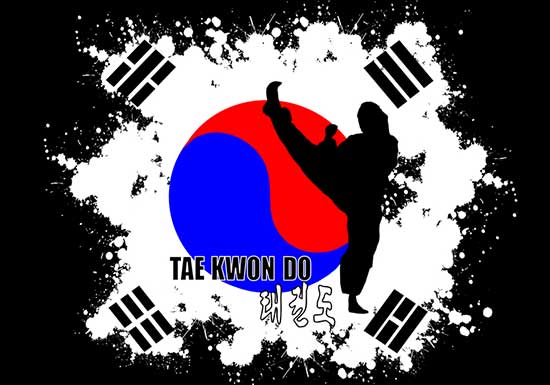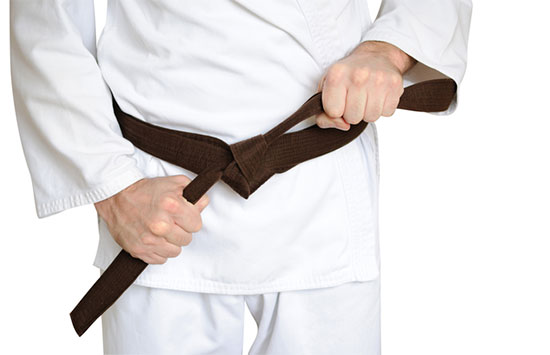The graceful, lethally skilled martial art of Taekwondo brings with it a long history that can be traced back to Korea in the 1940s.
Influenced by karate and Chinese martial arts, Taekwondo is one of the most popular styles in the world today.
However, before you start learning this renowned Korean art form, it’s worth knowing about its closest martial counterpart, Silat.
Contents
What is Silat?
Silat is an indigenous Indonesian martial art that has strong influences from the local tribal customs and culture.
With origins dating back to the 14th century, Silat can be seen as one of the oldest martial arts, originally developed for self-defense.
Essentially, Silat is known for its extremely fluid fighting techniques and high emphasis on kneeing and kicking maneuvers.
It combines elements of Boxing, Karate, Judo, and Kickboxing with an overall style that focuses on the body’s flexibility, footwork, and grace. It is a deadly martial art that incorporates brutal maneuvers to instill pain.
Silat Techniques
Silat is a striking martial art developed for combat between two people. The principal techniques involve brutal kicks, punches, and throws, although there are a number of upper-body techniques that include elbow strikes, shoulder thrusts, and choking techniques.
The goal is to incapacitate the opponent by exploiting their weaknesses.
Silat can be practiced with a wide variety of weapons. Great emphasis is placed on the importance of teamwork between the practitioners so that one individual’s assault can effectively neutralize another’s attack.
Silat Advantages
- It is a practical martial art focused on combat moves over sportive techniques.
- Its striking and throwing techniques make it an effective close-range self-defense tool
- The techniques emphasize flowing, circular blocks instead of linear striking motions, which is useful in street fights and even against multiple attackers.
- Silat can be practiced with or without weapons, so it is suitable for a wide range of individuals.
Silat Disadvantages
- Silat is brutal, so striking and throwing techniques are not always effective when used against an opponent with a higher level of skill.
- The practice of Silat requires intense physical exertion and training, meaning that practitioners put themselves at a higher risk of injury.
What Is Taekwondo?
Taekwondo is a South Korean martial art developed by South Korean General Choi Hong Hi and the military in 1952 to help defend against North Korean aggression.
Since its first appearance, Taekwondo has become one of the most respected martial arts systems in the world today.
Taekwondo can be best described as a highly technical, striking martial art that emphasizes mobility, balance, and efficient movement over strength.
It uses Korean martial arts principles such as footwork, body positioning, striking techniques, kicking, and self-defense tactics.
Techniques of Taekwondo
Taekwondo techniques are aggressive and agile, making use of the entire body. They emphasize power and speed over strength, with a highly trained practitioner capable of delivering fast, powerful blows to vital points on the body.
The typical Taekwondo moves include striking techniques, kicking techniques, and grappling techniques.
To become adept at Taekwondo, you’ll need at least six months of training. You’ll learn moves to the head, body, and limbs, including kicks, punches, and throws.
Kicks are usually the most lethal moves in Taekwondo because they are hard to defend against, while strikes to the body are not as obvious but can also be highly effective.
The main goal is to quickly break an opponent’s balance so that you can land a devastating attack that will leave them incapable of fighting back. Then you keep attacking, finding any weak points you can find to break them down.
Taekwondo Advantages
- Taekwondo offers high levels of speed and agility, making it easier to avoid damage from your opponent.
- It is a highly practical martial art because its techniques are readily transferable to most combat situations, which helps make the learning process easier.
- It is tailor-made for self-defense because of its fast, hard-hitting nature.
- Taekwondo is a highly efficient way to learn how to fight.
Taekwondo Disadvantages
- Since it relies heavily on agility, it is not a good choice for individuals who do not have a lot of fitness and stamina.
- Taekwondo’s techniques are designed around the body’s weight distribution, which lowers its effectiveness in fighting larger opponents.
- The techniques can become ineffective if they are not applied properly, leading to an increased risk of injury.
Could the Art of Silat and the Art of Taekwondo ever be combined?
Yes! The art of Taekwondo will complement the art of Silat because it is an aggressive martial art that favors speed and agility over strength.
Taekwondo is a highly versatile martial art, and you can use it to learn from this indigenous Indonesian martial art as well as incorporate its techniques into your Taekwondo training.
Silat can be used in Taekwondo training to teach you how to effectively deal with multiple opponents, as well as giving you a brutal striking martial art that can be used at close range.
Of course, this is not an exact science, and the two arts may not complement each other perfectly, but there are definitely common themes between them, and they do seem to complement each other quite well.
Difference between Silat vs. Taekwondo
- Silat is a very brutal martial art, whereas Taekwondo is more of a sport.
- In Taekwondo, the goal is to win tournaments and to be the best competitor you can be. In Silat, the goal is to survive and escape.
- The stances in Taekwondo are more graceful and upright than those in Silat, which are more grounded and realistic based on real human movement.
- The kicking stances in Silat are usually lower than those in Taekwondo. Arms tend to be held close to the body, and elbows bent because it’s designed to protect the body most efficiently.
- In Silat, you have a much wider range of techniques than in Taekwondo. There are also more techniques for weapons training in Silat, where Taekwondo typically has no weapons.
Similarities between Silat vs. taekwondo
As a result of the aforementioned differences, both martial arts have these similarities:
- Both Taekwondo and Silat emphasize practicality, so their moves work when used on the street or in competitions.
- Both martial arts stress the importance of speed, agility, and technique over strength.
- Both martial arts are highly physical, and you’ll need to put in a lot of practice to master them, so be prepared for a tough training regime. In the end, it will all be worth it.
Conclusion
Despite being two different martial arts, Taekwondo and Silat have a lot of common themes and principles.
They complement each other very well in terms of combat training, as each has benefits for the other.
If you want to learn more about these two martial arts, we recommend checking them both out. Taekwondo is relatively easy to train with because of its practicality and high level of versatility.
Silat is a little bit harder to learn, but it’s a brutal martial art that will make you feel like a warrior.



